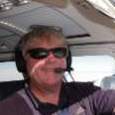The CAFE Measure of Efficiency - Mooney Style!
-
Members Online
- Hector
- Jason 1996 MSE
- Johnny U
- Hradec
- redbaron1982
- 0TreeLemur
- neilpilot
- johnnyr172
- DXB
- AndreiC
- BlueSky247
- GeeBee
- Ivan
- raymondscott0321
- eman1200
- mooneyfun
- shawn-201zb
- takair
- spistora
- skipswift
- 1980Mooney
- KPSO
- Bunti
- Aerodon
- MDMooney
- Planegary
- KHyde
- hammdo
- Fly Boomer
- EricJ
- M20S Driver
- philiplane
- spaceman39a
- Rick Junkin
- blankc
- PT20J
- Sheriff23
- Jeff Uphoff
- kortopates
- FlyingDude
- Rmfriday
- MB65E
- ArtVandelay
- Ragsf15e


Recommended Posts
Join the conversation
You can post now and register later. If you have an account, sign in now to post with your account.